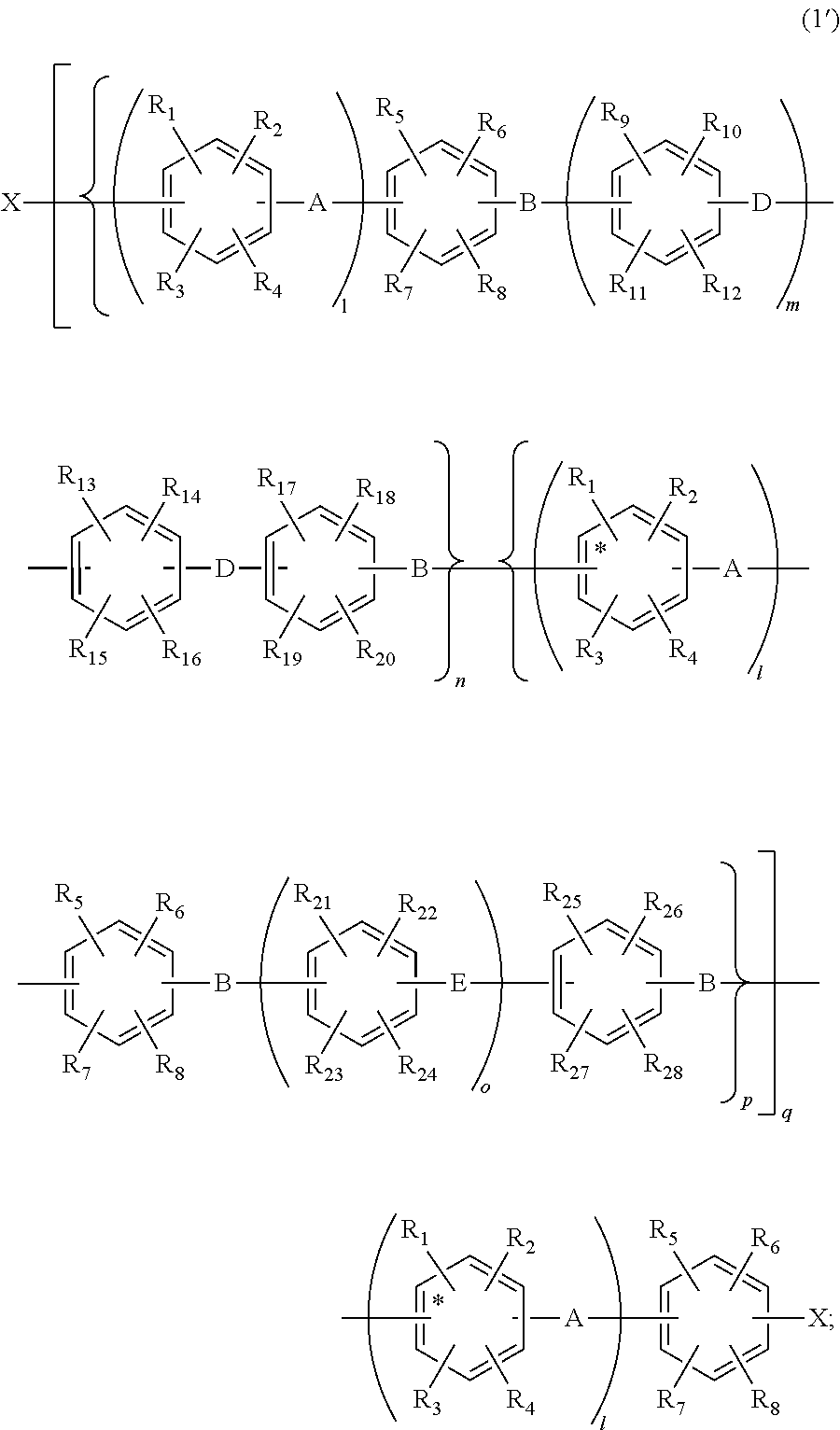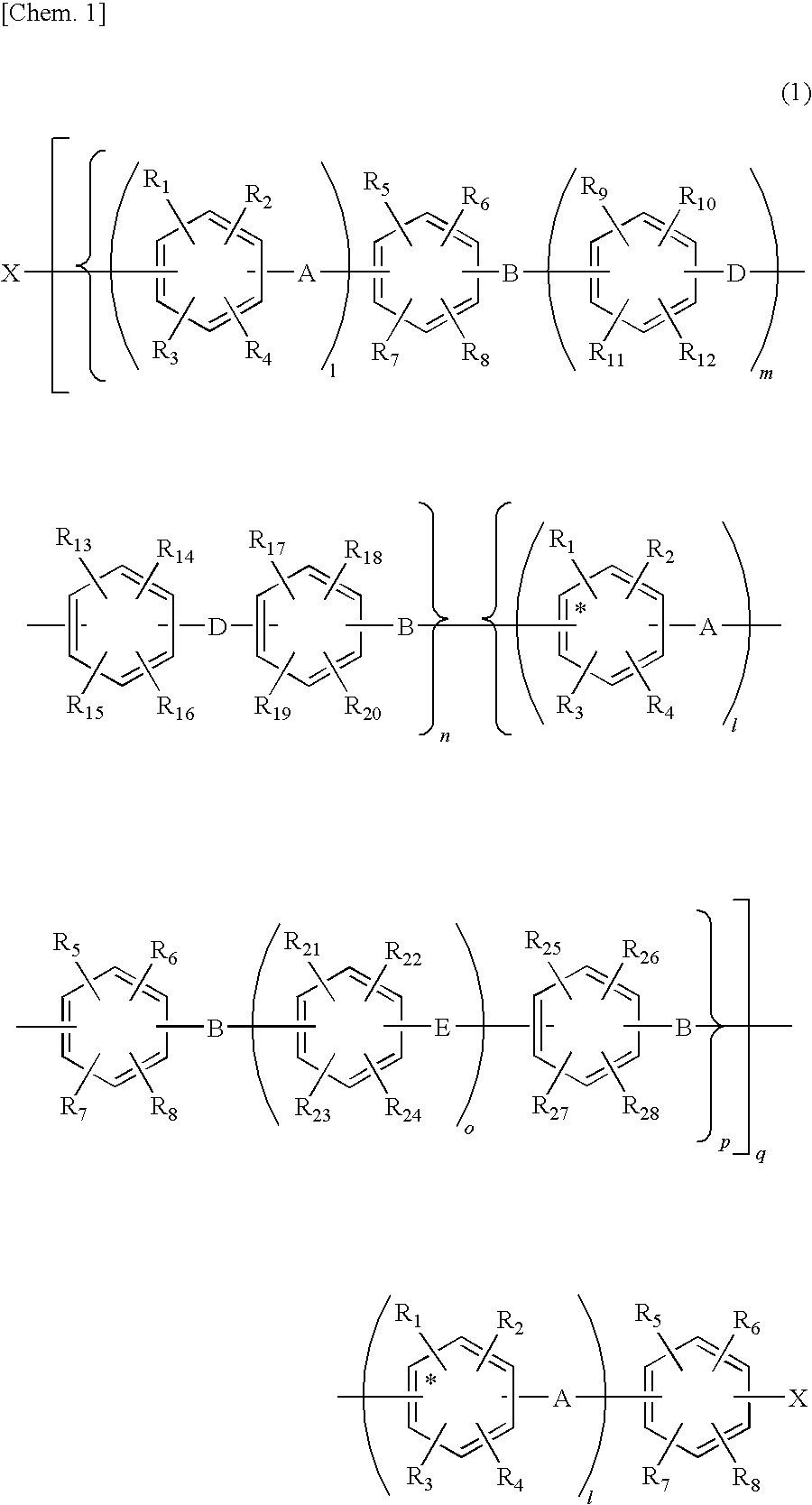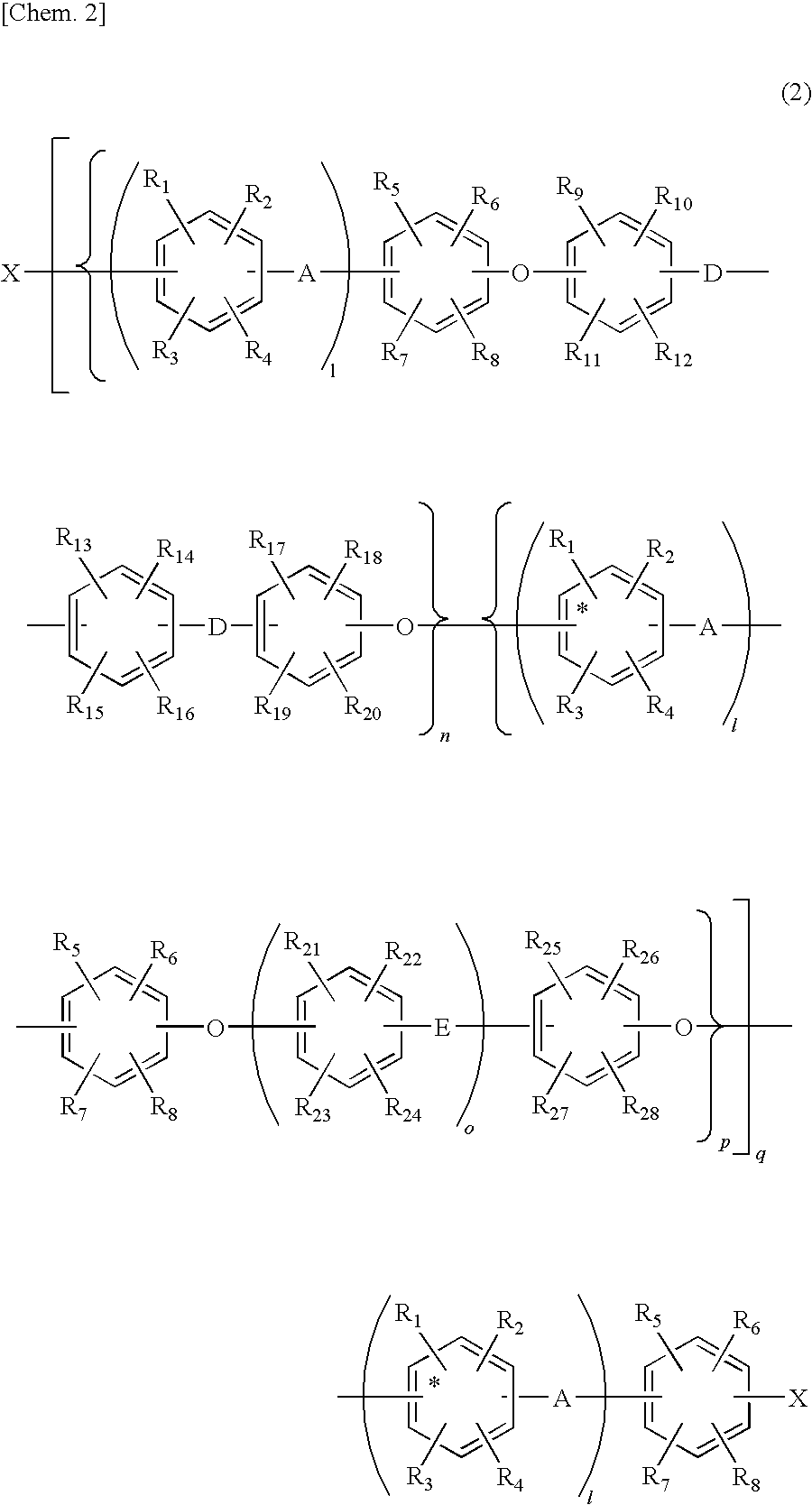Aromatic compound and sulfonated polyarylene polymer
a technology of sulfonated polyarylene and compound, which is applied in the preparation of carbonyl compounds, organic chemistry, and electrochemical generators, etc., can solve the problems of power generation failure, insufficient contact of inorganic materials with substrates or electrode interfaces, and difficulty in forming conductive layers on substrates or electrodes, etc., to achieve high methanol resistance, high proton conductivity, and good processability
- Summary
- Abstract
- Description
- Claims
- Application Information
AI Technical Summary
Benefits of technology
Problems solved by technology
Method used
Image
Examples
example 1
Synthesis of Hydrophobic Unit
[0142]A 1-liter separable three-necked flask equipped with a stirring blade, a thermometer, a nitrogen inlet tube, a Dean-Stark tube and a condenser tube was charged with 60.3 g (240 mmol) of 4,4′-dichlorobenzophenone, 69.3 g (200 mmol) of 4,4′-(1,4-phenylenediisopropylidene)bisphenol (Bis-P) and 35.9 g (260 mmol) of potassium carbonate. Further, 370 mL of sulfolane and 190 mL of toluene were added. The mixture was heated at 150° C. under reflux in a nitrogen atmosphere. Water resulting from the reaction was formed into an azeotropic mixture with toluene and was removed through the Dean-Stark tube. Water ceased to occur after 3 hours, and toluene was removed from the reaction system. The reaction liquid was stirred at 180° C. for 7 hours, and 20.1 g (80 mmol) of 4,4′-dichlorobenzophenone was added, followed by stirring for 3 hours. The reaction liquid was left to cool, and inorganic matters insoluble in the reaction solution were removed by filtration wi...
example 2
Synthesis of Sulfonated Polymer
[0144]A 1-liter three-necked flask equipped with a stirrer, a thermometer and a nitrogen inlet tube was charged with 53.3 g (133 mmol) of neopentyl 3-(2,5-dichlorobenzoyl)benzenesulfonate, 74.7 g (16.6 mmol) of the hydrophobic unit from Example 1 with 4500 number average molecular weight, 2.94 g (5.0 mmol) of bis(triphenylphosphine)nickel dichloride, 0.67 g (5.0 mmol) of sodium iodide, 15.7 g (60 mmol) of triphenylphosphine and 23.5 g (360 mmol) of zinc. The flask was then purged with dry nitrogen. Subsequently, 320 mL of N,N-dimethylacetamide (DMAc) was added to the flask, and stirring was performed for 3 hours while maintaining the reaction temperature at 80° C. The reaction liquid was then diluted with 540 mL of DMAc, and insolubles were filtered.
[0145]The resultant solution was placed in a 2-liter three-necked flask equipped with a stirrer, a thermometer and a nitrogen inlet tube, and was heated to 115° C. with stirring. Subsequently, 23.2 g (266 m...
example 3
Synthesis of Hydrophobic Unit
[0148]A 1-liter separable three-necked flask equipped with a stirring blade, a thermometer, a nitrogen inlet tube, a Dean-Stark tube and a condenser tube was charged with 52.4 g (240 mmol) of 4,4′-difluorobenzophenone, 14.1 g (60.0 mmol) of 4-chloro-4′-fluorobenzophenone, 70.2 g (203 mmol) of 4,4′-(1,3-phenylenediisopropylidene)bisphenol (Bis-M), 23.7 g (67.5 mmol) of bis(4-hydroxyphenyl)fluorene and 48.5 g (351 mmol) of potassium carbonate. Further, 430 mL of DMAc and 220 mL of toluene were added. The mixture was heated at 150° C. under reflux in a nitrogen atmosphere. Water resulting from the reaction was formed into an azeotropic mixture with toluene and was removed through the Dean-Stark tube. Water ceased to occur after 3 hours, and toluene was removed from the reaction system. The reaction liquid was stirred at 160° C. for 7 hours, and 7.0 g (20.0 mmol) of 4-chloro-4′-fluorobenzophenone was added, followed by stirring for 3 hours.
[0149]The reaction...
PUM
| Property | Measurement | Unit |
|---|---|---|
| glass transition temperature | aaaaa | aaaaa |
| temperatures | aaaaa | aaaaa |
| temperature | aaaaa | aaaaa |
Abstract
Description
Claims
Application Information
 Login to View More
Login to View More - R&D
- Intellectual Property
- Life Sciences
- Materials
- Tech Scout
- Unparalleled Data Quality
- Higher Quality Content
- 60% Fewer Hallucinations
Browse by: Latest US Patents, China's latest patents, Technical Efficacy Thesaurus, Application Domain, Technology Topic, Popular Technical Reports.
© 2025 PatSnap. All rights reserved.Legal|Privacy policy|Modern Slavery Act Transparency Statement|Sitemap|About US| Contact US: help@patsnap.com



